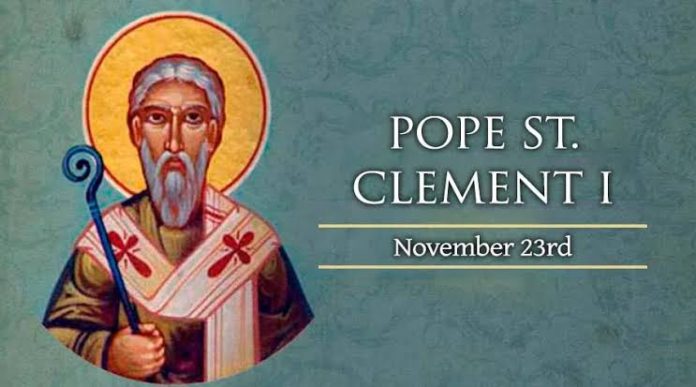Saint Clement I, byname Clement of Rome, Latin Clemens Romanus, the first Apostolic Father, pope from 88 to 97 or from 92 to 101, the supposed third successor of St. Peter the Apostle. According to the early Christian writer Tertullian, he was consecrated by St. Peter, and St. Irenaeus lists him as a contemporary of the Apostles and witness of their preaching. Eusebius of Caesarea dates his pontificate from 92 to 101. His martyrdom is legendary, and he has been hypothetically identified with the Clement mentioned in the Letter of St. Paul to the Philippians 4:3. His attribute is an anchor, to which he was tied and cast into the sea, according to spurious tales.
Authorship of the Letter to the Church of Corinth (or First Letter of Clement, I Clement), perhaps the most important 1st-century Christian document other than the New Testament, has been traditionally ascribed to him. Still extant, it was written to settle a controversy among the Corinthians against their church leaders and reveals that Clement considered himself empowered to intervene (the first such action known) in another community’s affairs. His Letter achieved almost canonical status and was regarded as Scripture by many 3rd- and 4th-century Christians.
According to the apocryphal Acta dating to the 4th century at the earliest, Clement was banished from Rome to the Chersonesus during the reign of Emperor Trajan and was set to work in a stone quarry. Finding on his arrival that the prisoners were suffering from a lack of water, he knelt down in prayer. Looking up, he saw a lamb on a hill, went to where the lamb had stood, and struck the ground with his pickaxe, releasing a gushing stream of clear water. This miracle resulted in the conversion of large numbers of the local pagans and their fellow prisoners to Christianity. As punishment, Clement was martyred by being tied to an anchor and thrown from a boat into the Black Sea. The legend recounts that every year a miraculous ebbing of the sea revealed a divinely built shrine containing his bones. However, the oldest sources on Clement’s life, Eusebius and Jerome, note nothing of his martyrdom.
The Inkerman Cave Monastery marks the supposed place of Clement’s burial in Crimea. A year or two before his own death in 869, Saint Cyril (born Constantine, 826–869) brought to Rome what he believed to be the relics of Saint Clement, bones he found in the Crimea buried with an anchor on dry land. They are now enshrined in the Basilica di San Clemente. Other relics of Saint Clement, including his head, are claimed by the Kyiv Monastery of the Caves in Ukraine.



